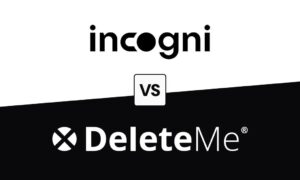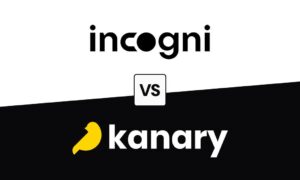Welcome to our blog post series dedicated to delving into the intricate world of language translation, uncovering its concealed ethical challenges. In this edition, we embark on a captivating journey to explore the profound impact of bias and privacy concerns in the rapidly evolving realm of translation. As technology shapes global communication, it becomes paramount to illuminate these crucial issues that often remain unnoticed. Join us as we peel away layers to reveal the complex webs woven by bias and privacy concerns within language translation. Prepare for a stimulating exploration that promises to reshape your understanding of this vital aspect of our interconnected global landscape!
Introduction: Decoding Language Translation and Its Ethical Complexities
In recent times, the language translation sector has faced heightened scrutiny due to a variety of ethical considerations. Among these concerns are the intricate matters of bias and privacy.
Bias in language translation occurs when translators introduce partiality into their work, leading to errors or mistranslations. Privacy concerns arise when translators gain access to confidential information while performing translations.
Several avenues exist to tackle these ethical challenges. One approach involves ensuring that all translators receive proper training and certification. Another strategy is to formulate comprehensive policies and procedures to address bias and privacy issues.
The overarching goal is to guarantee the accuracy and impartiality of all translations. By confronting these ethical challenges head-on, the language translation industry can enhance its service quality for clients and cultivate trust within the public sphere.
The Role of Translators in Mitigating Bias and Safeguarding Privacy
Within the context of ethical considerations in language translation, translators assume a pivotal role in countering bias and privacy concerns. Armed with expertise in languages and cultures, translators uniquely contribute to mitigating potential biases and misunderstandings that may arise during translation.
During the translation process, translators must remain vigilant about cultural biases. This implies avoiding literal translations of words or phrases that fail to account for the cultural backdrop of interpretation. For instance, idiomatic expressions often lose their meaning or confuse when translated literally. To maintain accuracy, translators must be attuned to these subtleties and accurately convey the original text’s intended meaning.
Furthermore, as custodians of sensitive information, translators must diligently uphold client privacy. This encompasses stringent confidentiality measures to prevent the unauthorized sharing of personal information disclosed during translation.
By acknowledging these ethical concerns and proactively addressing them, translators contribute to fostering respectful and precise communication between diverse cultures.
Ensuring Translation Precision: Best Practices
In an evolving global business landscape, language translation has assumed heightened significance for international enterprises. However, this increasing reliance on translation underscores the imperative for accuracy, as even minor errors can yield costly repercussions.
Several strategies exist to ensure translation accuracy:
- Opt for reputable translation services: Selecting a reputable service is paramount to ensure translation precision. Prioritize established services employing skilled and certified translators.
- Thoroughly review translations: Once you receive translations, scrutinize them meticulously to identify and rectify errors. If feasible, involve someone proficient in both languages for an additional review.
- Engage multiple translators: Employing multiple translators for each project enhances accuracy by detecting errors that a single translator might overlook.
- Leverage technology: Numerous software programs and online tools enhance translation accuracy. These tools include automatic spell and grammar checkers, online dictionaries, and glossaries.
- Simplify source text: Keeping the source text simple minimizes the potential for translation inaccuracies. Avoid complex sentence structures and intricate vocabulary that could hinder accurate translation.
Challenges Confronting Language Translators
Language translators confront an array of challenges when striving for precise translations. A key challenge involves ensuring unbiased translations that preserve the original text’s meaning. Additionally, safeguarding privacy poses a challenge due to the confidential nature of many translated documents.
Navigating Risks in Language Translation Projects
In the realm of language translation, an array of risks demand consideration to ensure ethical and accurate translation. Below are pivotal risks to bear in mind when overseeing language translation projects:
Bias: Identifying potential biases within source text is crucial. This challenge surfaces notably when translating historical documents containing outdated or offensive language. Collaborate with qualified translators versed in the nuances of the source language for accurate, impartial translation.
Privacy Concerns: Translating personal information necessitates addressing privacy concerns. Discuss privacy protocols with translators beforehand and establish protective measures to safeguard individuals’ confidentiality.
Accuracy: Inaccurate translations bear significant consequences. Ensuring accuracy entails working with experienced translators and, ideally, seeking verification from an independent translator.
Mitigating these risks advances ethical and successful language translation projects.
Guidelines for Ethical Language Translation Services
The significance of precise language translation is evident in fields like medicine, law, and finance. However, ethical considerations underpin this sensitive work. This blog post explores the ethical dimensions of language translation, focusing specifically on bias and privacy concerns.
Guarding against bias is paramount in language translation. Bias can manifest through translators’ personal opinions, literal translations of idiomatic expressions devoid of cultural context, or the use of offensive language. Counteracting bias entails collaborating with esteemed translation services that enlist adept professionals experienced in your subject matter. Rigorous review of translations before publication ensures alignment with your intended meaning.
Privacy poses another ethical concern in language translation, particularly for confidential documents and communications. Select translation services with stringent confidentiality policies to safeguard data integrity and privacy.
Adhering to these ethical principles ensures accurate and unbiased language translations. Partner with reputable companies, employing competent professionals and fortified confidentiality measures.
Conclusion: Forging an Ethical Path Forward in Language Translation
In an increasingly interconnected world, effective cross-cultural communication hinges on accurate language translation. However, ethical challenges, particularly bias and privacy issues, permeate this field.
Thankfully, actionable steps can be taken to address these challenges and chart an ethical course for language translation. Confronting personal biases, employing multiple sources for translation, and advocating for robust data privacy policies are pivotal measures. By implementing these actions, an ethical framework for language translation can be fostered—a framework that is inclusive and impartial.”



































